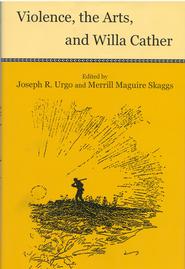
From her childhood explorations with vivisection through her adult sense that human life was characterized by cyclical encounters with death and disaster, Willa Cather was devoted to making art in the face of violence. Twenty-three critics contribute to the fullest explication to date of Cather, violence, and the arts, exploring thematic representations of violence in war, suicide, sexual trauma, shame, and rage as well as aesthetic responses to violence through literary choreographies and encounters with kind and unkind things. In this volume, Willa Cather emerges as a resource for survival in an age of terror, an artist who encourages her readers to feel at home in the nexus of creativity and terror, and to seek creative responses to the horror of human life. According to the critics gathered here, Cather's aesthetic is built upon surfaces below which are violent and deadly depths, and about which her best lives attempt to soar. Joseph R. Urgo is Vice President for Academic Affairs and Dean of Faculty at Hamilton College. Merrill Maguire Skaggs is Baldwin Professor of the Humanities at Drew University.
In the introduction Joseph R. Urgo finds in Cather’s work the recurrence of existential terror, a sensibility reflective of living in a world that may be destroyed, or may destroy us, in a moment. The critical perspectives in this volume present an artist who provides an aesthetic to enable us, in the post 89/11 era, to “face with fortitude” (in Cather’s words) the next sudden destruction “and the future.”
Introduction
In the introduction Joseph R. Urgo finds in Cather’s work the recurrence of existential terror, a sensibility reflective of living in a world that may be destroyed, or may destroy us, in a moment. The critical perspectives in this volume present an artist who provides an aesthetic to enable us, in the post 89/11 era, to “face with fortitude” (in Cather’s words) the next sudden destruction “and the future.”
Posted October 1, 2007
